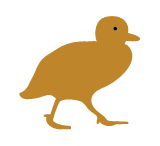Environmental archaeology is a key discipline within the archaeological sciences. Zooarchaeology and archaeobotany are fundamental specialisations that allow archaeologists to investigate past economies, ecology, trade, migration and social interaction. This intensive laboratory and field-based course (archaeobotany only) over 5-days will allow students to explore the breadth of past plant or animal use globally. It will offer hands-on practical classes introducing students to key archaeobotanical or zooarchaeological methods. Zooarchaeology and archaeobotany will be taught in alternate years.
The course will include:
· on site methods for archaeobotanical recovery;
· Laboratory methods for the analysis of plant macro and microfossils (including for fruits, seeds, roots and tubers, pollen and phytoliths) or vertebrate skeletal remains (including mammals, reptiles, birds, fish)
· Methods for the production and curation of reference collections, including collaborative ethnoarchaeological research.
The course will also include discussion of key ethical considerations in the practice of archaeobotany and zooarchaeology, and the potential for archaeological knowledge around past plant or animal use to contribute to future solutions, including global food security, the renewal of cultural landscape management practices, and biological conservation.
Learning Outcomes
Upon successful completion, students will have the knowledge and skills to:
- develop the skills and concepts underpinning archaeobotanical or zooarchaeological analysis;
- apply professional laboratory techniques to manage materials, data and equipment in archaeobotanical and zoo archaeological analysis
- Analyse and explain the contexts in which archaebotany and zooarchaeology can be applied to archaeological research
- design a small project or desk-top study applying archaeobotanical or zooarchaeological analysis;
- critically evaluate literature in environmental archaeology.
- critically assess the capacity of environmental archaeology datasets to address archaeological research questions.
Indicative Assessment
- Literature-based methodological design (30) [LO 1,3,4,5]
- Four in-class lab-based assessments (30) [LO 1,2,3]
- Practical assemblage assessment (20) [LO 1,2,3,5]
- Practical assemblage report (20) [LO 4,5,6]
The ANU uses Turnitin to enhance student citation and referencing techniques, and to assess assignment submissions as a component of the University's approach to managing Academic Integrity. While the use of Turnitin is not mandatory, the ANU highly recommends Turnitin is used by both teaching staff and students. For additional information regarding Turnitin please visit the ANU Online website.
Workload
130 hours of total student learning time made up from:
a) 40 hours of contact over 5 days: ~12 hours of lectures and 3-4 hours of tutorials.
b) 90 hours of independent student research, reading and writing.
Inherent Requirements
Participation in this course requires hands-on interaction with genuine skeletal remains in interactive practical labs, and may be spiritually/emotionally/culturally confronting for some people. If you require adjustments/additional support for the course or have concerns about participation, please contact the course convenor or ANU Accessibility to discuss your needs.
Requisite and Incompatibility
You will need to contact the School of Archaeology and Anthropology to request a permission code to enrol in this course.
Prescribed Texts
Archaeobotany:
Charles, M., Crowther, A., Ertug, F., Herbig, C., Jones, G., Kutterer, J., Longford, C., Madella, M., Maier, U., Out, W., Pessin, H., Zurro, D., (2009) Archaeobotanical Online Tutorial. http://archaeobotany.dept.shef.ac.uk
Fairbairn, A.S., Florin, S.A., 2022. Archaeological identification of fragmented nuts and fruits from key Asia-Pacific economic tree species using anatomical criteria: Comparative analysis of Canarium, Pandanus and Terminalia, Archaeology in Oceania 57, 160-188.
Ball, T., Chandler-Ezell, K., Dickau, R., Duncan, N., Hart, T.C., Iriarte, J., Lentfer, C., Logan, A., Lu, H., Madella, M., Pearsall, D.M., Piperno, D.R., Rosen, A.M., Vrydaghs, L., Weisskopf, A., Zhang, J., 2016. Phytoliths as a tool for investigations of agricultural origins and dispersals around the world, Journal of Archaeological Science 68, 32-45.
Birks, H.J.B., 2008. Paleoecology, Encyclopaedia of Ecology, Elsevier Inc, pp. 2623-2634.
Zooarchaeology:
Lyman, R.L., 1994. Vertebrate Taphonomy. Cambridge University Press, Cambridge
Filios, M. and Blake, N. 2015 Animal bones in Australian Archaeology. Sydney University Press, Sydney.
Assumed Knowledge
Some knowledge of environmental archaeology or the biological sciences would be advantageous but not essential
Fees
Tuition fees are for the academic year indicated at the top of the page.
Commonwealth Support (CSP) Students
If you have been offered a Commonwealth supported place, your fees are set by the Australian Government for each course. At ANU 1 EFTSL is 48 units (normally 8 x 6-unit courses). More information about your student contribution amount for each course at Fees.
- Student Contribution Band:
- 14
- Unit value:
- 6 units
If you are a domestic graduate coursework student with a Domestic Tuition Fee (DTF) place or international student you will be required to pay course tuition fees (see below). Course tuition fees are indexed annually. Further information for domestic and international students about tuition and other fees can be found at Fees.
Where there is a unit range displayed for this course, not all unit options below may be available.
| Units | EFTSL |
|---|---|
| 6.00 | 0.12500 |
Course fees
- Domestic fee paying students
| Year | Fee |
|---|---|
| 2026 | $4500 |
- International fee paying students
| Year | Fee |
|---|---|
| 2026 | $6660 |
Offerings, Dates and Class Summary Links
ANU utilises MyTimetable to enable students to view the timetable for their enrolled courses, browse, then self-allocate to small teaching activities / tutorials so they can better plan their time. Find out more on the Timetable webpage.
Class summaries, if available, can be accessed by clicking on the View link for the relevant class number.
Spring Session
| Class number | Class start date | Last day to enrol | Census date | Class end date | Mode Of Delivery | Class Summary |
|---|---|---|---|---|---|---|
| 9377 | 01 Oct 2026 | TBA | TBA | 31 Dec 2026 | In Person | N/A |


